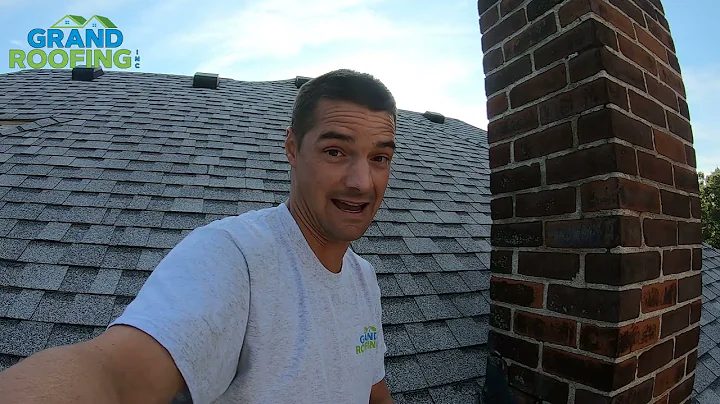Ultimate Guide to Repairing and Maintaining Line Bracelets | Expert Tips Revealed
Table of Contents
- Introduction
- Importance of Repairing and Maintenance for Line Bracelets
- Identifying Weak Links and Wear Areas
- Removing and Rebuilding the Clasp
- Assessing the Solder and Diamond Placement
- Soldering the Replacement Bar with Medium Solder
- Shaping the Replacement Bar and Soldering Technique
- Strengthening the Soldered Area
- Using Boracic Acid to Protect the Diamonds
- Adding a Plate for Support and Functionality
- Refixing Wires and Securing the Bracelet
- Testing and Finalizing the Repair
- Encouraging Customers for Regular Maintenance
- Conclusion
Repairing and Maintaining Line Bracelets: A Comprehensive Guide
As jewelers and goldsmiths, it is crucial to understand the nuances of repairing and maintaining precious jewelry. One particular piece that requires special attention is a line bracelet, especially those adorned with diamonds and made with platinum. In this article, we will delve into the meticulous process of repairing and maintaining a line bracelet, paying close attention to its clasp, soldering, diamond protection, and overall restoration. By following these steps and guidelines, you will not only enhance the longevity of the bracelet but also uphold its value and customer satisfaction. Let's begin!
Importance of Repairing and Maintenance for Line Bracelets
Line bracelets hold a significant place in the world of jewelry due to their elegant design and timeless appeal. However, their delicate nature makes them susceptible to wear and tear, potentially leading to loss or damage. Therefore, it is essential to emphasize the significance of regular maintenance and periodic repairs to customers. By highlighting the repercussions of neglecting such maintenance, such as the risk of losing diamonds or weakening the bracelet's structure, you can motivate customers to seek professional attention on time.
Identifying Weak Links and Wear Areas
Before initiating any repair work, it is crucial to thoroughly analyze the line bracelet, identifying weak links and areas that have experienced significant wear. Pay close attention to the clasp area, as it is often the most vulnerable spot in a bracelet. A broken clasp mechanism can render the entire bracelet useless, making it imperative to address any issues in this area first. Additionally, examine the wires and connections, ensuring they are still strong and capable of withstanding the bracelet's daily wear.
Removing and Rebuilding the Clasp
To proceed with the repair process, start by safely removing the existing clasp from the bracelet. This step allows for closer inspection and ensures that any wear and tear beneath the clasp area can be adequately addressed. While replacing the entire clasp mechanism is an option, it is essential to consider factors such as the type of solder used and the overall condition of the bracelet. In cases where the soldering and connection appear satisfactory, repairing and reconstructing the existing clasp can yield equally satisfactory results. Remember to thoroughly clean the bracelet before commencing any repair work.
Assessing the Solder and Diamond Placement
When working with a line bracelet made of platinum, the solder used becomes a critical factor. Assess the type of solder used in the original construction and determine its reliability. If there are any doubts or concerns about the solder's strength, it is advisable to remove any diamonds before proceeding further. Platinum soldering requires a meticulous approach, utilizing a medium solder that can uphold the diamonds' integrity while ensuring a secure bond between the bracelet's components. With a focused and quick flame, solder all necessary areas, creating the strongest possible connection.
Soldering the Replacement Bar with Medium Solder
In cases where a replacement bar is required for the bracelet, it is essential to use medium solder and follow specific techniques to ensure durability and strength. Measure the thickness of the bar needed and cut out a suitable plate to serve as a bridge between the bracelet's components. Rather than relying on a thin wire, using a plate provides better stability and ease of handling during the soldering process. Remember to angle the soldered connection, creating a larger surface area for a stronger joint. This method, similar to a scarf joint, enhances the bracelet's overall resilience.
Shaping the Replacement Bar and Soldering Technique
Once the replacement bar has been soldered onto the bracelet, shaping and strengthening the newly constructed section are of utmost importance. Utilize pliers to squeeze the material tightly, eliminating any potential weak points. If necessary, further harden the area using a hammer or apply additional solder for reinforcement. By employing these techniques, you ensure that the repaired section of the bracelet remains resilient and capable of withstanding daily wear.
Strengthening the Soldered Area
To enhance the strength and resilience of the soldered areas, it is beneficial to employ a substance called boracic acid. This white, powdery substance, mixed with isopropyl alcohol, creates a protective layer over the diamonds, safeguarding them during the repair process. By coating the diamonds with this mixture and burning it onto the stones, any underlying dirt or debris adheres to the mixture, effectively cleaning the surfaces. This method is especially useful for maintaining plating or textured finishes, preserving the bracelet's overall aesthetic appeal.
Adding a Plate for Support and Functionality
As part of the repair process, adding a plate to support the bracelet and optimize its functionality is essential. By shaping a small piece of wire, flattening it, and soldering it onto the bracelet, you create a cushioned area where the wearer's finger makes contact with the clasp. Additionally, ensure the plate follows the natural bend of the bracelet to provide increased strength and stability in the area where the most tension is often experienced. Thoroughly test the tension after the repair to guarantee its success.
Refixing Wires and Securing the Bracelet
Aside from repairing the clasp mechanism and adding a support plate, inspect the entire bracelet for any loose or unsoldered wires. Use pliers to tighten and secure these wires by applying additional solder on the sides. This step ensures that all components of the bracelet are intact and capable of withstanding the bracelet's movements and tension. Once these necessary fixes are applied, the bracelet will be ready for the final steps of polishing and customer contact.
Testing and Finalizing the Repair
Before handing over the repaired bracelet to the customer, conduct thorough testing to ensure its functionality and structural integrity. Assess the clasp mechanism, ensuring it opens and closes smoothly without any hitch. Verify the overall strength of the soldered areas by wearing the bracelet and cautiously subjecting it to regular movements and stress. Only after successfully passing these tests, proceed to the finalizing steps, including a professional polishing to restore the bracelet's shine and luster. With the repair completed and confirmed, contact the customer and express the readiness of their beloved jewelry.
Encouraging Customers for Regular Maintenance
To maintain long-term customer satisfaction and ensure the prolonged lifespan of line bracelets, it is essential to encourage a routine maintenance schedule. By contacting customers periodically, either requesting them to bring their jewelry for assessment or providing them with reminders, you demonstrate your commitment to their jewelry's well-being. Emphasize the importance of regular inspections and timely repairs, reassuring them that their cherished pieces are in expert hands.
Conclusion
Repairing and maintaining line bracelets is a meticulous process that demands attention to detail and a deep understanding of the jewelry's construction. By following the steps outlined in this guide, you can successfully restore a line bracelet's functionality, strength, and beauty. Remember to prioritize customer communication and education, emphasizing the significance of regular maintenance for their jewelry's longevity. With your expertise and commitment to quality, you will ensure the satisfaction and happiness of each customer who entrusts you with their precious jewelry.
Highlights
- Repairing and maintaining line bracelets is crucial for their longevity and value.
- Carefully identify weak links and wear areas to address during the repair process.
- Removing and rebuilding the clasp ensures a functional and secure connection.
- Assess the solder and diamond placement to determine the best approach for repair.
- Solder the replacement bar using medium solder and angle the connection for added strength.
- Strengthen the soldered area by using pliers to tightly squeeze the material.
- Coating diamonds with a mixture of boracic acid and isopropyl alcohol adds protection.
- Adding a plate provides support and functionality to the bracelet.
- Secure loose wires with additional soldering to ensure the bracelet's integrity.
- Thoroughly test the repaired bracelet before finalizing the repair with polishing.
FAQ
Q1. How often should line bracelets undergo maintenance?
A1. Line bracelets should ideally undergo maintenance every six months to ensure their integrity and functionality.
Q2. Can line bracelets with delicate diamonds be repaired without removing the stones?
A2. It is possible to repair line bracelets with delicate diamonds without removing the stones by using a medium solder and careful soldering techniques.
Q3. Is regular maintenance necessary for all types of line bracelets?
A3. Yes, regular maintenance is essential for all types of line bracelets, as it helps prevent potential damage, loss, or weakening of the bracelet's structure.
Resources:
- [ExampleURL1]()
- [ExampleURL2]()







